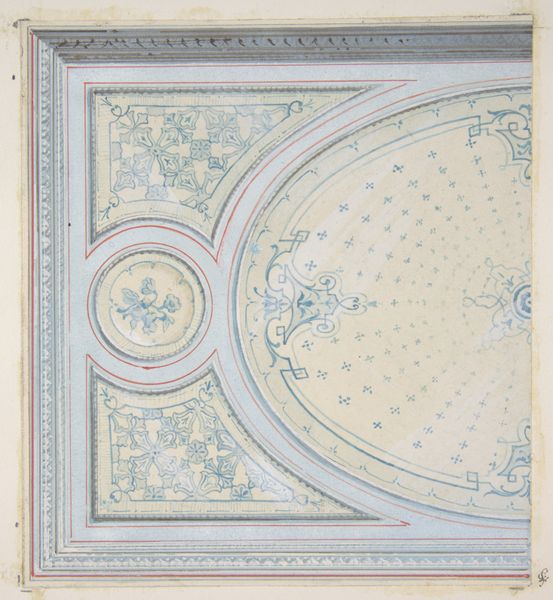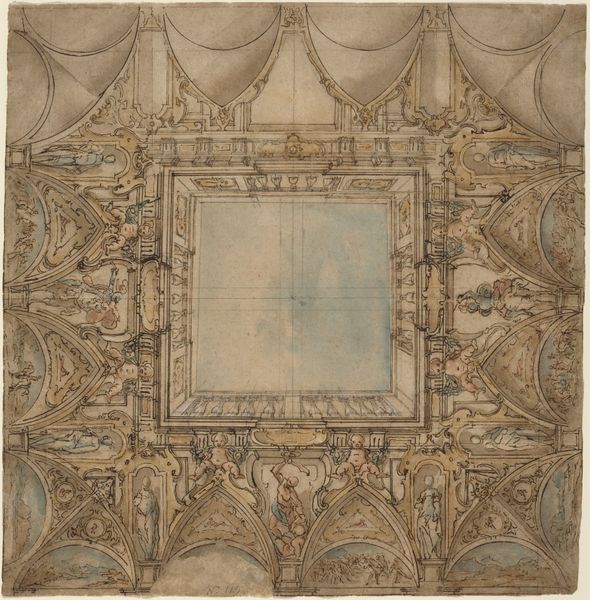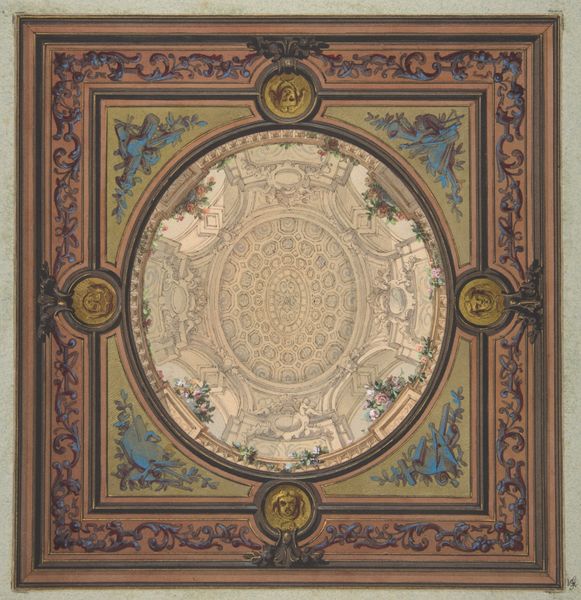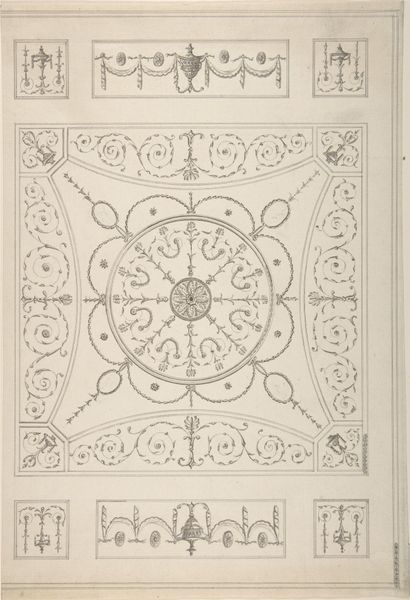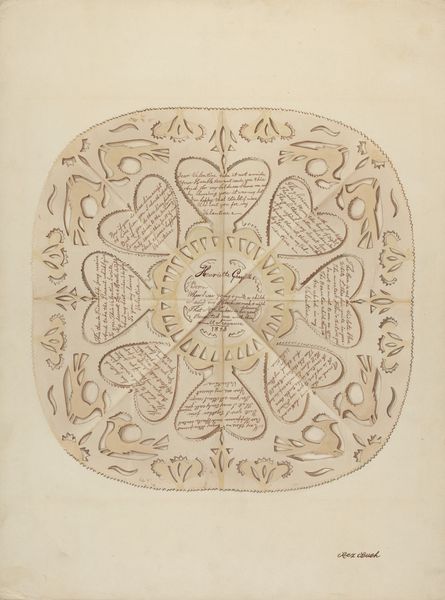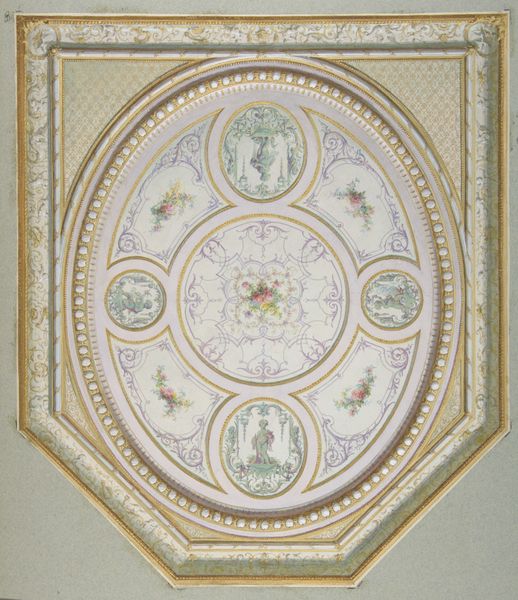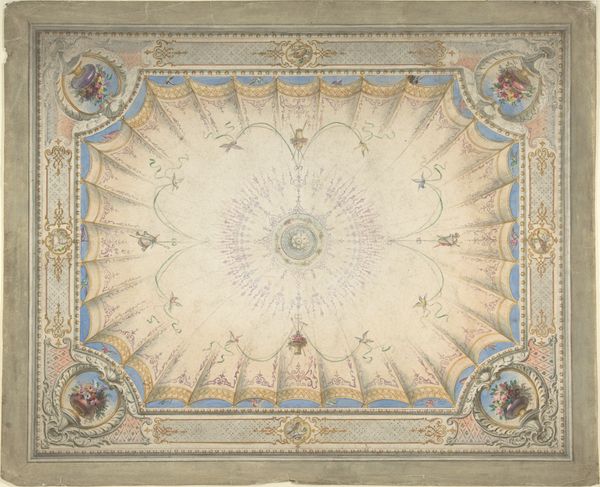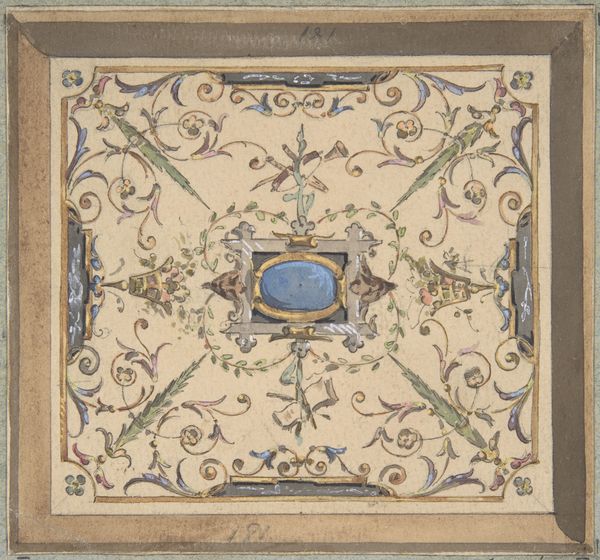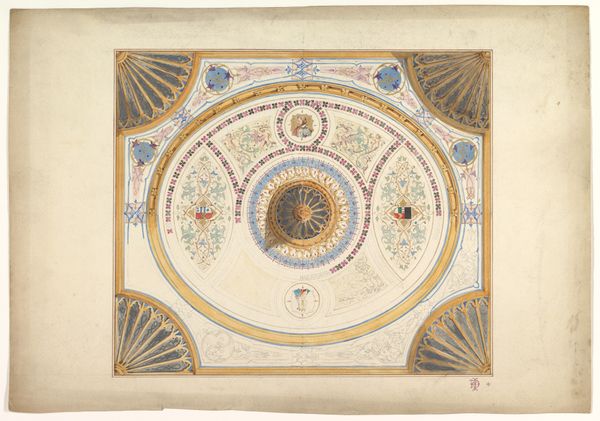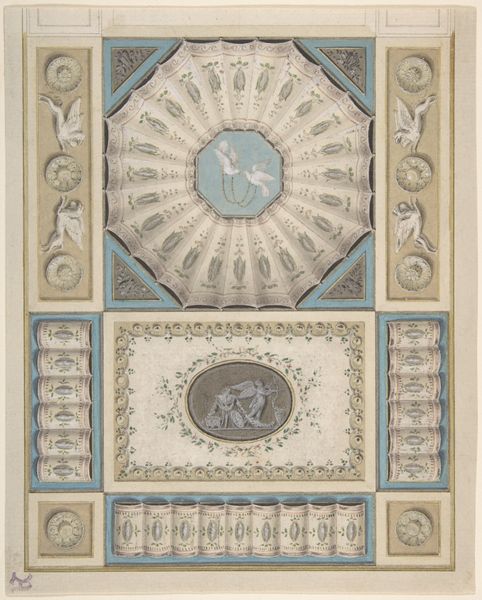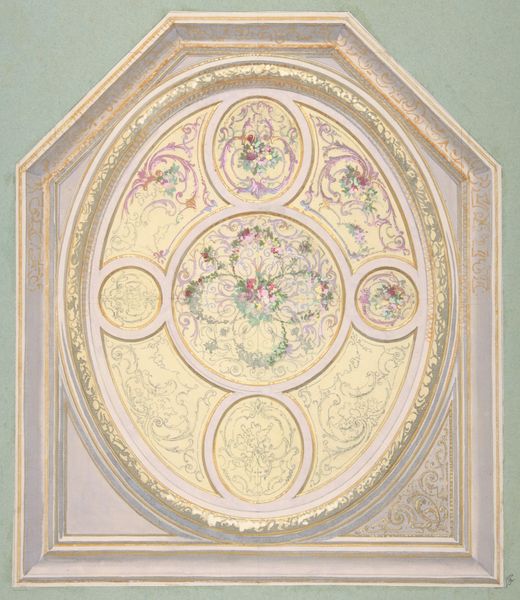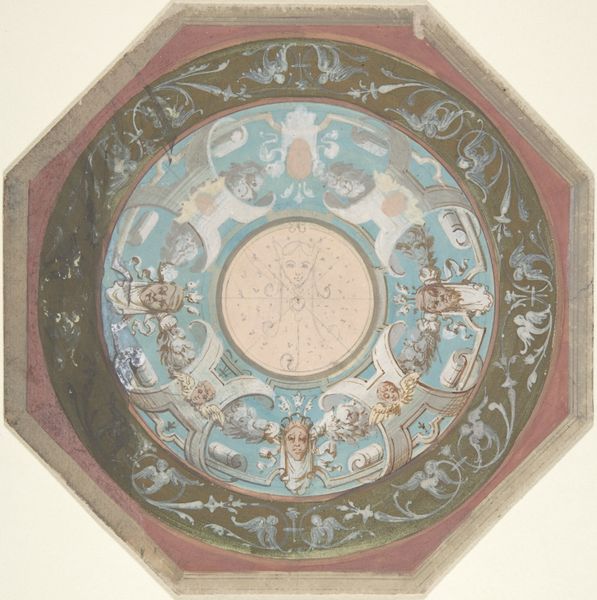
Ontwerp voor een plafondschildering met illusionistische koepelgewelf waarin een roset 1677 - 1755
0:00
0:00
drawing, architecture
#
drawing
#
baroque
#
perspective
#
traditional architecture
#
architecture
Dimensions: height 522 mm, width 424 mm
Copyright: Rijks Museum: Open Domain
Curator: Here we have, “Ontwerp voor een plafondschildering met illusionistische koepelgewelf waarin een roset,” a drawing attributed to Elias van Nijmegen, created sometime between 1677 and 1755. Editor: My immediate thought is: breathtaking! The detail is mesmerizing, and the play of light is convincingly achieved for what is, at its heart, a work on paper. It truly embodies the dramatic effect the Baroque aesthetic aimed for. Curator: Indeed. The masterful employment of perspective yields an absorbing interplay of depths, doesn’t it? Consider how the ornate border contrasts against what the viewer is intended to read as vast empty space above the painted surface. The drawing allows for the assessment of the artist’s architectural envisioning. It transcends its status as mere preparatory study. Editor: The ornamental frame, the meticulousness… It is all undeniably striking. And the production, likely from workshop practices. Someone must have laid down initial lines. Assistants probably ground the pigments to create the washes you are speaking of before a skilled artist like van Nijmegen renders the final form with such convincing trompe l'oeil. Think about the patronage as well. I suspect the purpose behind all this was to adorn the space of some aristocrat who craved an imposing and idealized sky. Curator: An excellent point about the socio-economic contexts framing this. But the essence remains in the rendering. See how the rosette motif commands our gaze upwards, towards a painted heaven. The geometrical exactitude intertwined with organic forms. A structured yet illusionary vista meant to expand perceived boundaries. Editor: Although I acknowledge the virtuosity in the composition and its effects, the cultural ambitions intrigue me. I wonder about the studio’s location, workshop structures and relationships, not just individual brilliance, but the collective processes necessary to bring this architectural fiction to the upper classes and nobility of the period. The social machinery behind this type of ornamental opulence is interesting for my understanding. Curator: It’s quite clear how differently we appreciate the elements that constitute the artwork’s value! I see it largely through its arrangement of components and aesthetics, you find more in its genesis and destination. Editor: Perhaps together, we can glimpse something richer by integrating those perspectives, don’t you think?
Comments
No comments
Be the first to comment and join the conversation on the ultimate creative platform.
